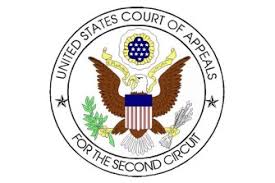
The COVID-19 pandemic was a disruptive event with the consequences continuing to reverberate through the economy and the business environment, in ways that not only affect companies’ operations and financial performance, but, for at least some companies, in ways that lead to securities class action litigation. So even though the initial COVID-19 outbreak in the U.S. was over four years ago, businesses continue to experience operational consequences from the pandemic, in some cases resulting in securities suits. The latest example is the lawsuit filed late last week against medical testing and diagnostic company QuidelOrtho Corporation, whose testing services revenue declined as the coronavirus transition to endemic status. A copy of the April 12, 2024, complaint against QuidelOrtho can be found here.
Background
QuidelOrtho provides respiratory disease medical diagnostic testing. Since the outbreak of COVID-19, the company has generated a significant amount of its revenue from COVID-19-related testing. The company’s revenues have, according to the company, “very high margin.”
In May 2022, as the coronavirus outbreak was transitioning to endemic status, the company reassured investors that it was well-positioned to maintain stable high revenues from its respiratory business. The company also aimed to launch its new flagship product, “Savana RVP4 Test, which tests for COVID and other respiratory conditions However, during the class period, the new product was not approved for use in the U.S.
In February 2024, the company reported disappointing fourth quarter results. The earnings miss was attributed to lower endemic COVID-19 revenues due to distributor destocking. The company cut its 2024 forecast, including a significant cut in COVID-19 revenue guidance. The company’s share price declined over 32 percent on this news. In April 2024, the company announced that it had withdrawn its FDA submission for approval of the Savana RVP 4 product. The company’s share price declined a further ten percent.
The Lawsuit
On April 12, 2024, a plaintiff shareholder filed a securities class action lawsuit in the Southern District of New York against the company and certain of its executives. The complaint purports to be filed on behalf of investors who purchased the company’s securities between February 18, 2022, and April 1, 2024.
The complaint alleges that the defendants failed to disclose: “(a) that QuidelOrtho sold more COVID-19 test to its distributors and pharmacy chain customers than they could resell to healthcare providers and end customers; (b) that excess inventories of COVID-19 tests existed throughout the supply chain; (c) that as a result of (a)-(b) above, QuidelOrtho’s distributors and pharmacy chain customers were poised to significantly reduce their COVID-19 test orders; (d) that undisclosed problems created a heightened risk that the Savanna RVP4 Test would experience a delayed commercial launch in the United States; (e) that as result of (a)-(d) above, Defendants lacked a reasonable basis for their positive statements about QuidelOrtho’s business, financials, and growth trajectory.”
The complaint alleges that the defendants violated Sections 10(b) and 20(a) of the Securities Exchange Act of 1934, and Rule 10b-5 thereunder. The complaint seeks to recover damages on behalf of the plaintiff class.
Discussion
I fully expected that the COVID-related securities litigation phenomenon was fully played out in 2023 and that we would see few if any further COVID-related suit filings this year. However, the COVID-related securities suits continue to be filed. By my count, this new lawsuit is the sixth COVID-related securities suit to be filed in 2024 (compared to only nine in all of 2023, including no lawsuits at all after the end of August 2023). Since the initial COVID outbreak in the U.S. in March 2020, there have been a total of 77 COVID-related securities suits filed.
This lawsuit, like most of the other cases that have been filed this year, reflect a fact pattern involving a company whose fortunes initially rose due to the pandemic-related conditions, but whose fortunes ebbed as the pandemic eased. This company’s circumstances also underscore what a disruptive event the pandemic was, in ways that challenged and continues to challenge many companies.
The continuing filing of COVID-related suits, and even more to the point, the fact patterns involved in the cases that continue to be filed, underscores just how disruptive an event the pandemic was for so many businesses. The upshot for me is a concern that as the pandemic’s disruptive effects continue to ripple through the economy and business environment, many companies will continue to experience operating impacts, which in turn could lead to further COVID-related securities class action lawsuit filings. In other words, the COVID-related securities litigation phenomenon could well have further to run. At this point it seems likely that we continue to see further COVID-related lawsuit filings as the year progresses.











